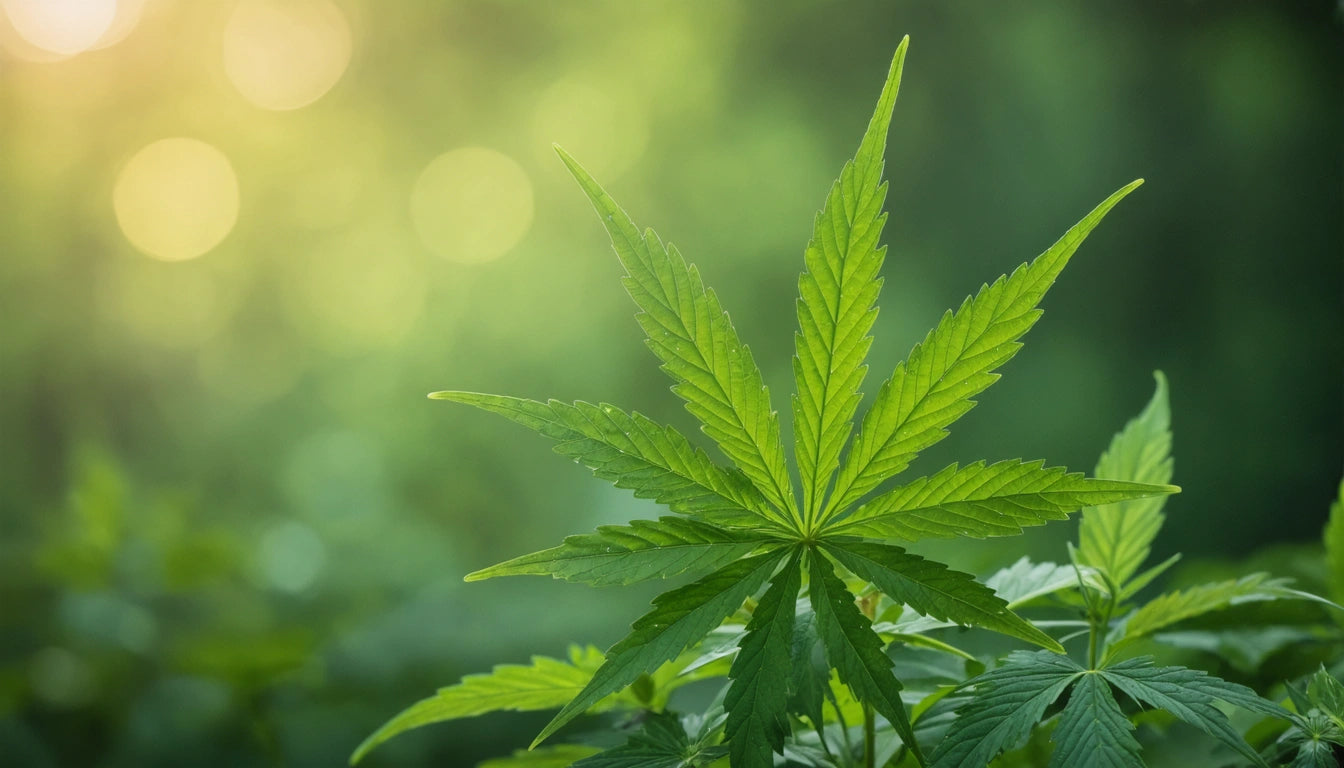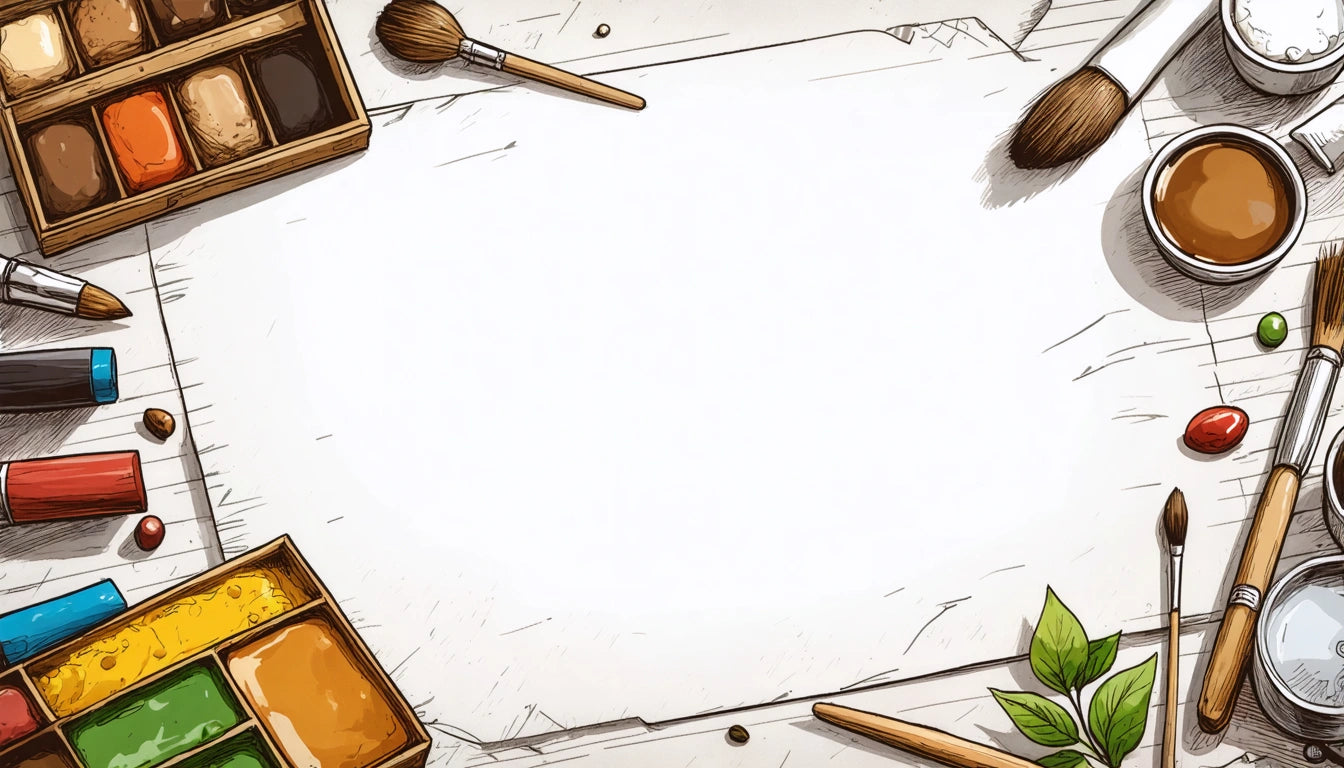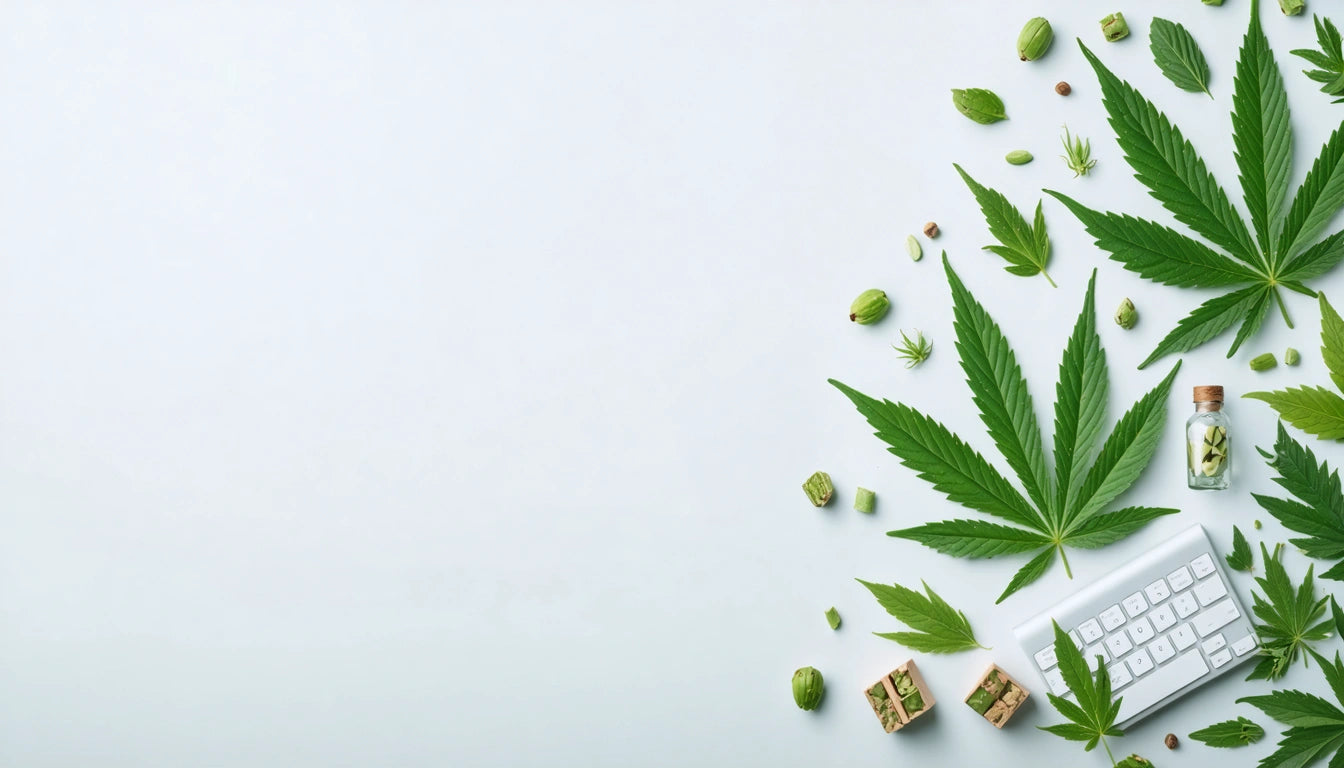Table of Contents
Identifying the Appearance of a Cannabis Leaf
Cannabis leaves are among the most recognizable plant structures in the world, yet many people still wonder exactly what does a pot leaf look like. Whether you're a curious observer, budding cultivator, or industry professional, understanding the distinctive appearance of cannabis foliage helps with proper identification and assessment of plant health.
Basic Structure of Cannabis Leaves
The iconic cannabis leaf typically features a palmate structure with serrated leaflets radiating from a central point. Most mature cannabis leaves display between 5-9 leaflets, though this number can vary based on genetics and growing conditions. Each leaflet has a lanceolate (lance-like) shape with serrated edges that resemble saw teeth.
According to research on cannabis leaf counts, a single plant can produce hundreds of leaves throughout its lifecycle, with the number of leaflets per leaf often increasing as the plant matures.
Key Parts of a Cannabis Leaf
- Petiole: The stem-like structure that connects the leaf to the main plant stalk
- Leaflets: The finger-like projections that make up the complete leaf
- Serrations: The tooth-like edges along each leaflet
- Veins: The network of channels that distribute nutrients throughout the leaf
- Stipules: Small leaf-like structures at the base of the petiole
Visual Characteristics and Identifying Features
What do pot leaves look like in terms of color and texture? Healthy cannabis leaves typically display a vibrant green color, ranging from light lime green to deeper forest green depending on the strain. The surface often has a slightly glossy appearance and may feel slightly sticky due to resin production.
When examining cannabis leaves, pay attention to the serrations along the edges. These serrated margins are one of the most distinctive features, with each tooth pointing toward the leaflet tip. The precise pattern of these serrations can sometimes help identify specific strains.
Our visual guide to identifying marijuana plants provides detailed images showing these characteristics across different varieties.
How Cannabis Leaves Change Through Growth Stages
What does pot leaves look like as they develop? Cannabis leaves undergo significant changes throughout the plant's life cycle.
Seedling Stage
The first set of true leaves (after the cotyledons) typically has just a single leaflet or three leaflets with minimal serration. These initial leaves appear more rounded and less distinct than mature foliage.
Vegetative Stage
As the plant enters vigorous growth, leaves develop their characteristic structure with 5-7 leaflets becoming common. The leaves grow larger, and serrations become more pronounced. This is when the classic "pot leaf" appearance fully emerges.
Flowering Stage
During flowering, new leaves often develop fewer leaflets (sometimes reverting to 3 or 1 per leaf) and may appear smaller than vegetative-stage leaves. Some leaves might show color changes as the plant directs energy toward flower production.
For commercial operations handling large quantities of plant material, efficient processing equipment becomes essential for managing harvested leaves and flowers while maintaining quality standards.
Different Varieties and Their Leaf Appearances
What do pot leaves look like across different varieties? Cannabis leaf appearance varies significantly between the main types:
Indica Leaves
Indica varieties typically produce broader, wider leaflets with a darker green color. The leaves often have more overlap between leaflets, creating a denser appearance. The overall leaf tends to be shorter and wider than sativa varieties.
Sativa Leaves
Sativa cannabis leaves feature slender, elongated leaflets with more space between them. They typically display a lighter green color and may grow quite large. The fingers are narrow and long, sometimes resembling a hand with spread fingers.
Hybrid Varieties
Hybrid cannabis plants show leaf characteristics that blend features from both parent types. The specific appearance depends on the dominant genetics, with some hybrids leaning more toward indica or sativa leaf structures.
Historical documentation shows how selective breeding has influenced leaf appearances over time.
Common Misconceptions About Pot Leaves
Several misconceptions exist about what pot leaves look like:
- All cannabis leaves have seven leaflets - While seven is common, the number can range from 1-13 depending on genetics and growth stage
- Leaf appearance directly indicates potency - Leaf structure is primarily determined by genetics, not THC content
- All cannabis leaves are the same green color - Leaves can range from yellow-green to deep blue-green, and some varieties develop purple or red hues
- Cannabis leaves always grow in the iconic fan pattern - Young plants and flowering plants often produce leaves with fewer leaflets
Comprehensive identification guides help dispel these misconceptions with accurate visual references.
Practical Identification Tips for Cannabis Enthusiasts
For those wanting to confidently identify cannabis leaves, consider these practical approaches:
First, examine the leaf arrangement. Cannabis leaves grow in an alternate pattern along the stem rather than opposite each other. This differs from some similar-looking plants like Japanese maple.
Second, count the leaflets. While the number varies, mature cannabis typically has more leaflets (5-9) than most look-alike plants. Each leaflet should have serrated edges with teeth pointing toward the tip.
Third, note the texture. Cannabis leaves have a slightly rough texture due to tiny hairs (trichomes) on the surface, especially on the underside. These may not be visible without magnification but contribute to the distinctive feel.
Finally, observe the plant structure. Cannabis develops a distinct growth pattern with main stems and branches that support the fan leaves. During flowering, cannabis plants produce distinctive flowers that confirm identification beyond just leaf appearance.
By understanding what pot leaves look like throughout their development and across different varieties, enthusiasts and professionals can better identify, cultivate, and appreciate this remarkable plant.











Leave a comment
All comments are moderated before being published.
This site is protected by hCaptcha and the hCaptcha Privacy Policy and Terms of Service apply.